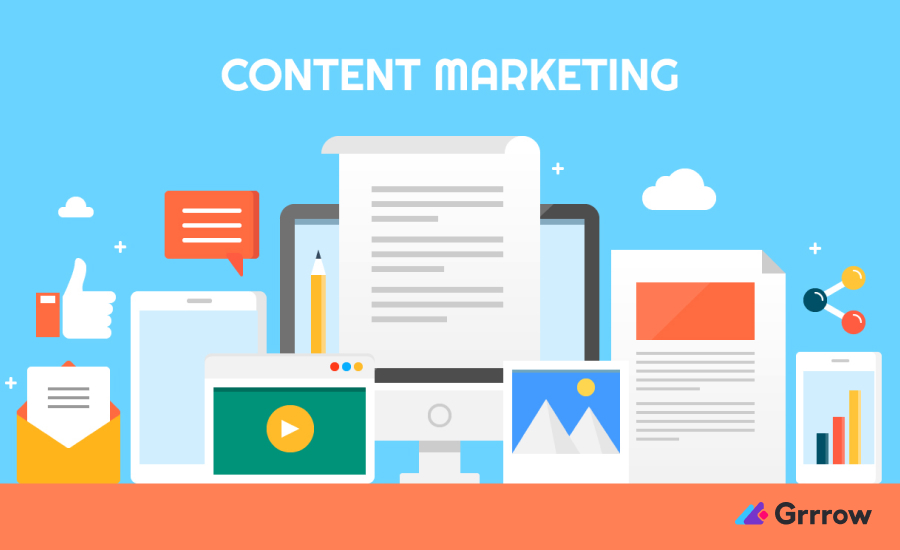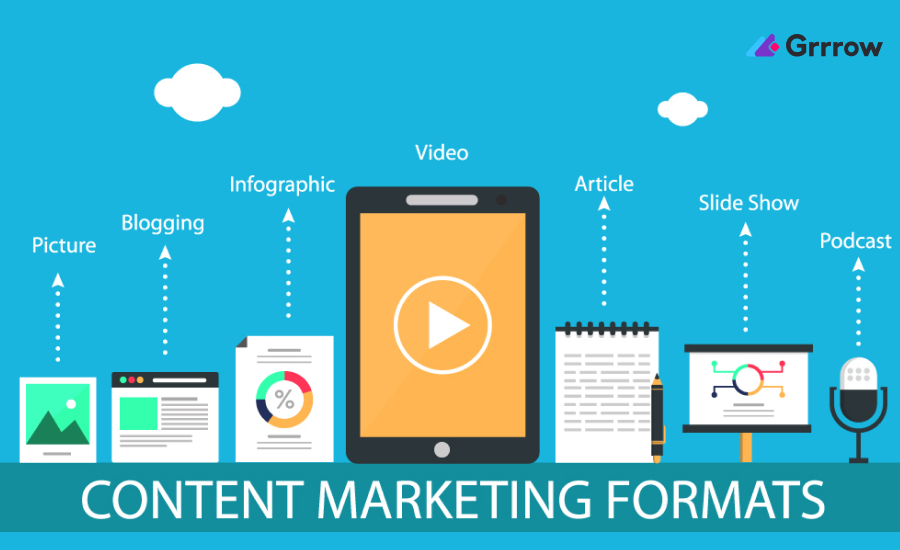Due to the deeper involvement of businesses in digital marketing, content marketing plans evolved into formal documents without which it is impossible to build a strategy. According to Semrush research, 78% of successful content marketing campaigns were based on a documented content marketing strategy in 2021. The types of content created within these campaigns could differ depending on the industries. But the main aspect that unites all of them is still the quality.
No matter what type of content you create to generate leads or engage the audience it is important to make it relevant. Consuming behaviors of this audience have formed some trends that lead companies in their content strategies.
Marketers today are more likely to increase their budget for creating high-quality digital content: blog posts, videos, images, infographics, podcasts, etc. In this article, we are going to figure out what digital content is in general, what types it can be, and what types of content are widely used by major businesses in their marketing plans.
What Is Digital Content
Any kind of media used to engage visitors or generate interest in your product or service can be considered digital content. Relevancy and consistency are the musts for any kind of it. Digital content has to bring value to any user of your service or visitor of your website. To make content useful it has to solve at least one of the following four challenges:
● Entertainment. High-quality digital content can have entertaining nature to bring emotional appeal to an audience. This type of digital content can often become viral and very shareable.
● Information. Digital content can have an informational purpose. It can present potential users with enough information about a product or service. And it can be also very shareable.
● Persuasion. This type of content is usually emotionally charged. It appeals to human feelings and can change the mind of consumers if necessary. Use cases can be a good example of written content that gradually changes the customer’s attitude.
● Conversion. Digital content aimed at increasing conversion usually appeals to a rational approach rather than an emotional one. It works better with a person that evaluates facts and statistics.
Any type of content can work differently with various individuals. It’s all about the human being. Some people are more decisive, others rely more on impressions and emotions. The best practice is to combine all these approaches to maximize the outcome. Let’s consider the main types of digital content to analyze where and when each can be useful.
 Types of Digital Content
Types of Digital Content
Content marketing is the best tool for better interacting with the audience. With a wise and considered approach, you can use various types of digital content to bring brand awareness, product credibility, and, finally, revenue. The following types of content can be used for various purposes and bring different values.
Digital documents
Digital documents can be not the most popular type of digital content but their role and value are hard to overrate. According to the research, both sales and marketing departments are employing documentation tools most often, with 62 percent and 57 percent, respectively.
Here are examples of digital documents:
- White papers.
- eBooks.
- One-pagers.
- Reports.
- Guides.
- Press releases.
Digital documents are usually distributed in portable document format better known as “PDF”. They may contain a combination of text, images, logos, etc. They can be easily printed or e-signed. Marketers can use these types of digital documents as closed assets to generate leads. When someone wants access to these digital resources they will need to provide an email address in exchange for them.
Web content
Though PDFs are distributed mostly online, they are not so convenient to share or update. There are other types of digital content that can combine text and static or motion media, but be available and shareable by the link:
- Landing pages.
- Product pages.
- Blog posts.
- Online publications.
- Product reviews.
This type of digital content is more likely to be shown in search results and search engines and Google algorithms highly evaluate it. People can easily find any web content and developers or marketers can timely update it if necessary. One-click sharing is also a great benefit of this type of digital content. You don’t need to save a PDF file on your device to share some information.
Visual media content
Static images and motion graphics are crucial in any content marketing strategy. This type of digital content has to attract the website visitor at first sight and become a strong communication tool. Web-based or standalone media content brings massive value to those who learn by seeing. It is helpful because it shows, rather than tells.
Combined with any kind of text content, media can have the form of infographics. This hybrid type helps you convey a message more clearly and shortly. With effective data presentation, you can quickly share information with your audience in a clever and eye-catching manner. According to HubSpot Blog Research, 45% of marketers are already using infographics while 38% of them plan to leverage it for the first time in 2022. Types of static images and graphics often used in content marketing include:
- Digital illustrations and photos.
- Banners.
- Static and animated Infographics.
- Videos.
- Reels and Stories.
- GIFs
- Screencasts.
Final Words About Types Of Digital Content
The world of digital content is not limited to the types mentioned above. Podcasts, Live Chats, or lections can also be an important part of content marketing strategy. The beauty of content marketing is that you can implement any approach that suits your industry and guarantee revenue and business scale.
Grrrow.me is a kind of agency that can help you with this. Our team is skillful and experienced enough to manage various types of digital content and apply the most effective techniques depending on your business goals and objectives. Contact us to get a comprehensive consultation and we will not let you down!







 Types of Digital Content
Types of Digital Content


